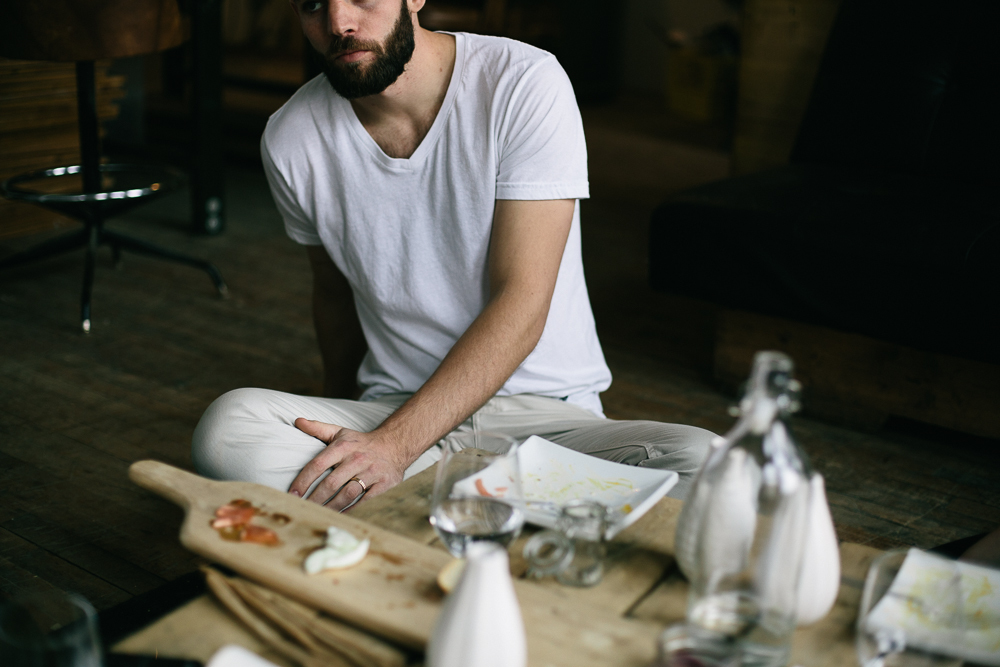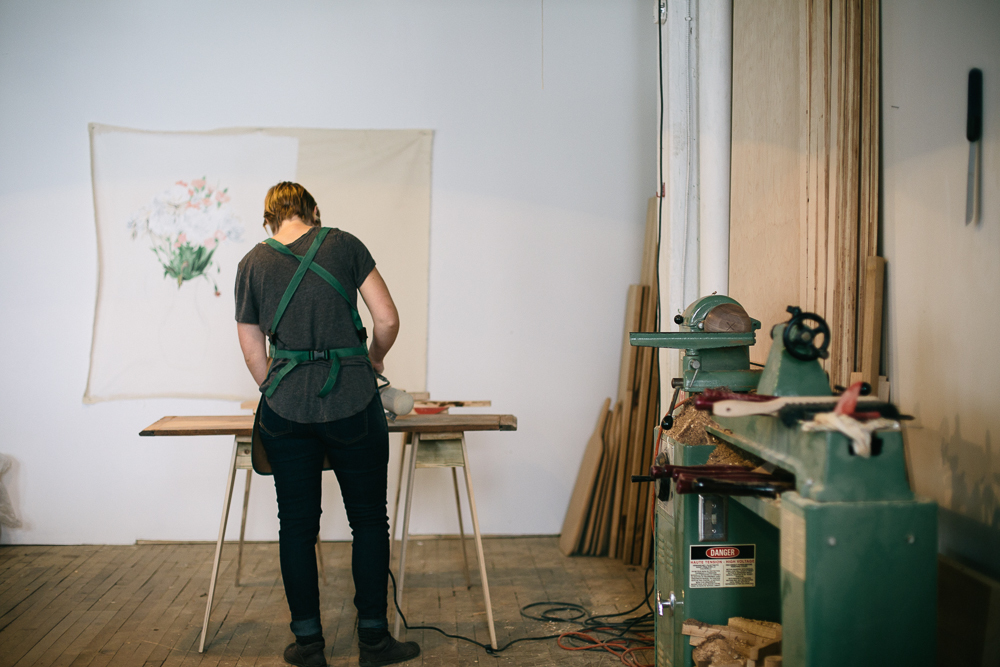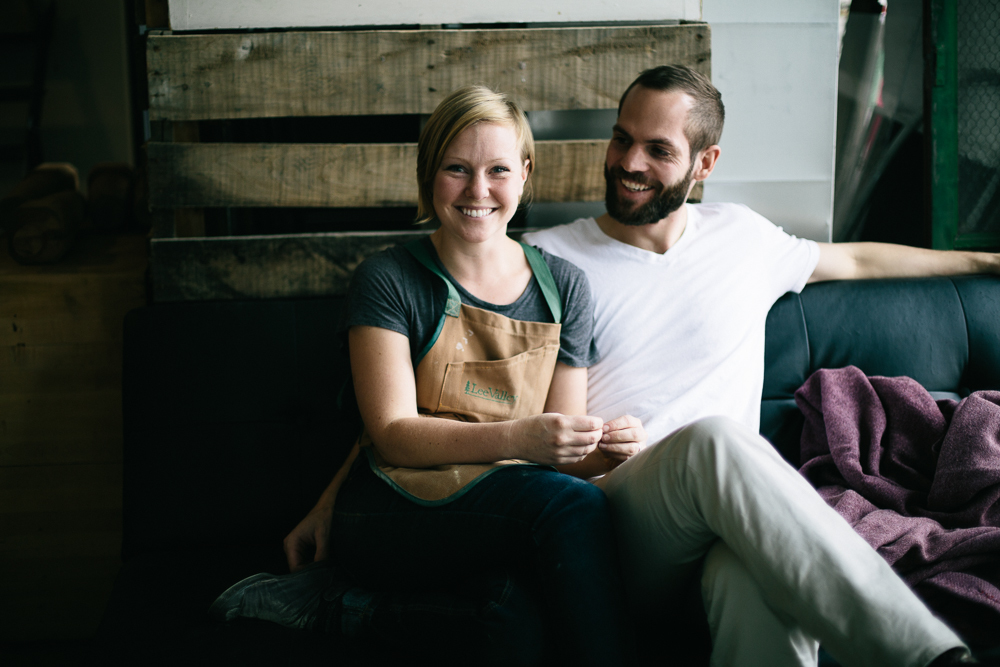
Jason and Karen Hare in the Exchange District studio where they craft their wares. // Photo Janine Kropla
Muddy Water magazine profiles Faculty of Architecture alum
Muddy Water, a new online Winnipeg magazine co-founded by a local group of five creative types, including Faculty of Architecture alumna Karen Hare, opened its first issue with this interview feature on Jason and Karen Hares’ creative process and wares.
The Muddy Water team includes Renee Girard (founder, creative director), Janine Kropla (founder, art director), Justin Schafer (writer), Chelsea Parkinson (writer) and Karen Hare (writer).
The online magazine characterizes itself this way: “Muddy Water Magazine celebrates the wild and wonderful of Winnipeg. We seek to explore the genesis of the creative spirit, the talent that thrives in spite of the cold and warms our frozen town. Our muses are the city’s local artists and makers. Our goal is to spotlight their works and wares. To inspire and be inspired.”
In the feature by Chelsea Parkinson with photos by Janine Kropla, Jason and Karen Hare, “makers of beautiful wooden goods,” welcome us into the Exchange District studio where they craft their wooden wares to tell us about their inspiration and creative process. The two met as undergrads at the Faculty of Architecture where Karen was studying interior design and Jason was a student in the architecture department.
What follow are excepts from the story in Muddy Water Magazine. Among other things, the couple discuss their plans to build and open a collective space and reveals the inspiration for the wedding rings Jason made for the two of them, a design conceived while he was in the architecture program. He is also currently working on his master’s degree in the department of landscape architecture.
J: I didn’t know what I wanted to do for the final project, and sometimes when I’m there I just dive into repetition to find a process, to find a form. So I ended up drawing circles, rings. I drew three circles, every time I ate, every day, for forty days. Every one was unique. I could never draw the same one more than once. They each gained their own, unique, flawed identity on the paper. And then I wondered, why couldn’t you give this to somebody to express your own identity?
K: It ended up being a symbol of being able to trade your imperfections as the most beautiful thing about you.
The two also discuss their current project and the link for them between country and city life.
On their current project:
K: So, right now we’re building a five-unit condo in Osborne Village, it’s a
collective of five groups of really talented people. The idea is that our personal kitchen and dining area in our condo will also serve as a gallery to show and sell small kitchen goods.
J: A friend of ours went to Germany and learned about baugroups, which is essentially where a collective comes together to develop a space they will all share. And we’ve done the talking and the planning and now it’s happening, the foundation is going in right now and hopefully by June of next year our shop will start opening.
…
On the link between country and city life:
Chelsea Parkinson: That city-to-country connection seems to be an important one for a lot of Winnipeggers.
K: Yeah, a lot of the places that feel the most like home to me are outside the city. The farmstead, the cabin. I think it’s really good to have a place to go to, so you can bridge the city and the country. Use the busyness of the city for the sharing and selling of your work, and then you have the country as a retreat from all of that in order to find inspiration and actually do the work.
J: Yeah, I’d say it’s an overarching philosophy with us. To create a relationship between the city and the country. It breeds a deep respect for things beyond us. The things just beyond ourselves.










